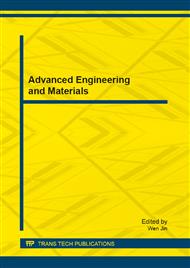p.652
p.658
p.665
p.671
p.679
p.686
p.694
p.700
p.706
Energy Information Communication Technologies for Smart Home Applications
Abstract:
This paper reviews previous and recent trends in energy information communication technologies (EICT) for smart home applications. Relevant EICT publications on smart homes are reviewed. Smart home and smart home energy management system (SHEMS) related concepts are described, followed by a thorough review of SHEMS and EICT technologies. As is increasingly recognized, EICT is a highly effective means of monitoring, controlling, and conserving energy consumption in smart home applications. Additionally, various EICT approaches are surveyed to evaluate the feasibility of smart home applications by discussing historical developments and introducing advanced EICT methods. Importantly, in addition to surveying the latest trends, this study contributes to efforts to further advanced EICT applications in smart homes.
Info:
Periodical:
Pages:
679-685
Citation:
Online since:
February 2013
Authors:
Price:
Сopyright:
© 2013 Trans Tech Publications Ltd. All Rights Reserved
Share:
Citation:


